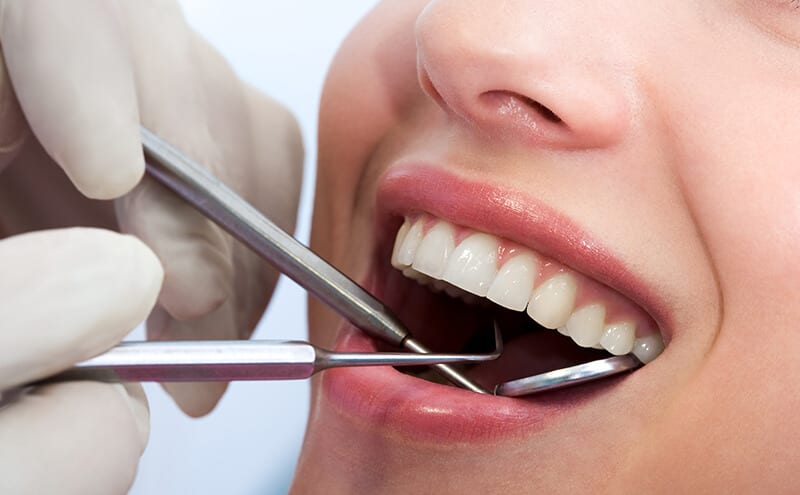Cosmetic Dentistry Bonding
Cosmetic Dentistry Bonding – Dental Bonding
Cosmetic Dentistry Bonding: Cosmetic dentistry bonding or simply dental bonding refers to the procedure involving the use of composite resin for various structural as well as aesthetic applications. Composite resin is a material that is flexible and offers immense possibilities for filling gaps between teeth, repairing chipped or broken teeth, reshaping the teeth and even superficially covering the teeth to provide a white smile. Resins like these are also used for filling cavities and replacing amalgam fillings. Dental bonding is a relatively inexpensive cosmetic dentistry treatment when compared to the cost of teeth implants or veneers.
To explain in a simple manner, a thin plastic coating is applied to the teeth. Then, the bonding material is applied which the dentist sculpts, shapes and colours to provide the desired result. Following this, a high-intensity light is applied that serves to harden the plastic and bring about an aesthetically polished surface.
Why Composite Resin?
Composite resin is resistant to wear and is reasonably translucent on account of its blend of glass-ceramic filler and acrylic resin. These resin fillings have increased in popularity due to their ability to be mixed and made similar to the colour, texture, translucency and other visual features of the surrounding teeth. They offer a vast aesthetic improvement when compared to amalgam fillings and cosmetic dental surgeons often replace their patients’ amalgam fillings with composite resin. Moreover, amalgam fillings are considered by some to pose significant health risks due to the presence of mercury.
However, composite fillings cannot serve the need for large fillings as they do not have a structure strong enough to withstand biting forces when spread out over a large area. Amalgam fillings are often avoided in favour of ceramic fillings for which CAD (Computer-Aided Design) and other computerized manufacturing methods for milling are used to create the filling from a block of ceramic. This can be conveniently done in a single session.
The Cosmetic Dental Bonding Procedure
Local anaesthesia serves to numb the area around the tooth. The tooth is then cleaned to remove any plaque or tartar which may have built up. The composite resin can only be applied to a clean area of the tooth to ensuring a strong bond. After the cleaning, an etching solution is applied which serves to create tiny cracks in the tooth’s enamel.
The cracks give a rough surface to the tooth which makes it easier for the composite resin to bond. Once a thin layer of the composite resin is applied, it is hardened using specialized light in a process which takes a few minutes. More and more resin layers are added for the tooth to be fully built up. The dentist then polishes the resin layers and shapes them so that they resemble the surrounding teeth.
The Positives Outnumber the Negative
The advantage of dental bonding is primarily affordability, as it offers a more affordable alternative to dental veneers. The primary disadvantage of composite resin filling is its strength, or rather the lack of it. Ceramic and porcelain are stronger materials than resin, but again these are obviously more expensive. Cosmetic dentistry bonding involving resin is ideal for small areas of filling while larger areas demand stronger materials.
Importance of Dentist Skill

Cosmetic dentistry bonding is a procedure requiring not only knowledge but also a good deal of skill, experience and craftsmanship. But the procedure can generally be performed by any cosmetic dentist or general dentist. However, there is also postgraduate training offered in dental bonding. Whether your dentist has the training or not specifically in dental bonding, it certainly would help if he/she has experience in the field as experience is everything in any cosmetic procedure. The dental clinic’s website will often provide details of previous work, or alternatively many dentists will have a portfolio of treatments conducted.
The costs of cosmetic dentistry bonding vary depending on the exact type of treatment performed. The price of the treatment is raised by the cost of the materials and the experience level of the dentist. Bonding veneers typically cost around £300 to £400 each and white fillings cost about £50 to £60 each.
Cosmetic dental bonding is an advanced and effective dental treatment which is ideal for filling small areas. The procedure is safe, and it is an affordable way to receive white dental fillings or cosmetic tooth coverings compared to other alternatives that are considerably more expensive.



